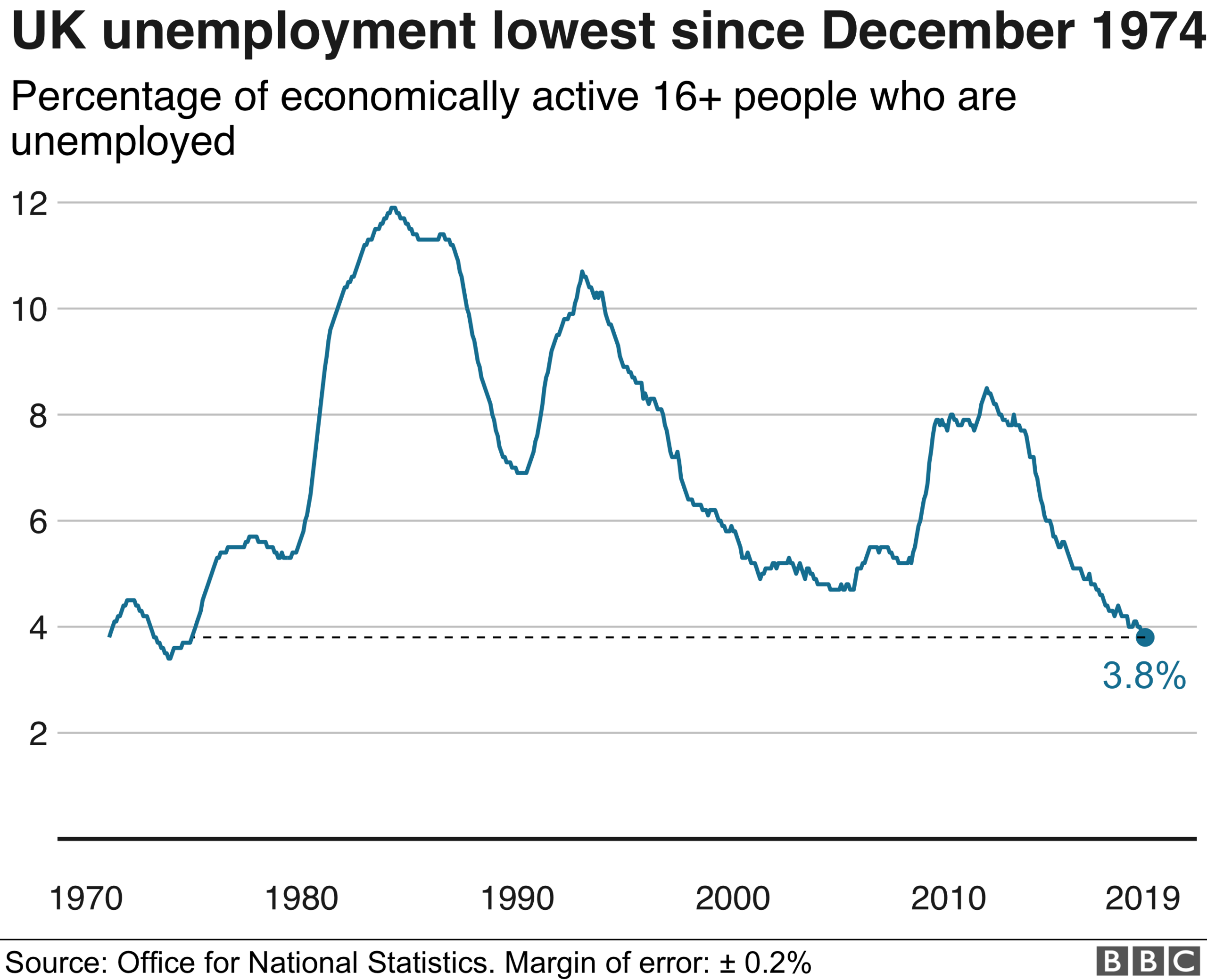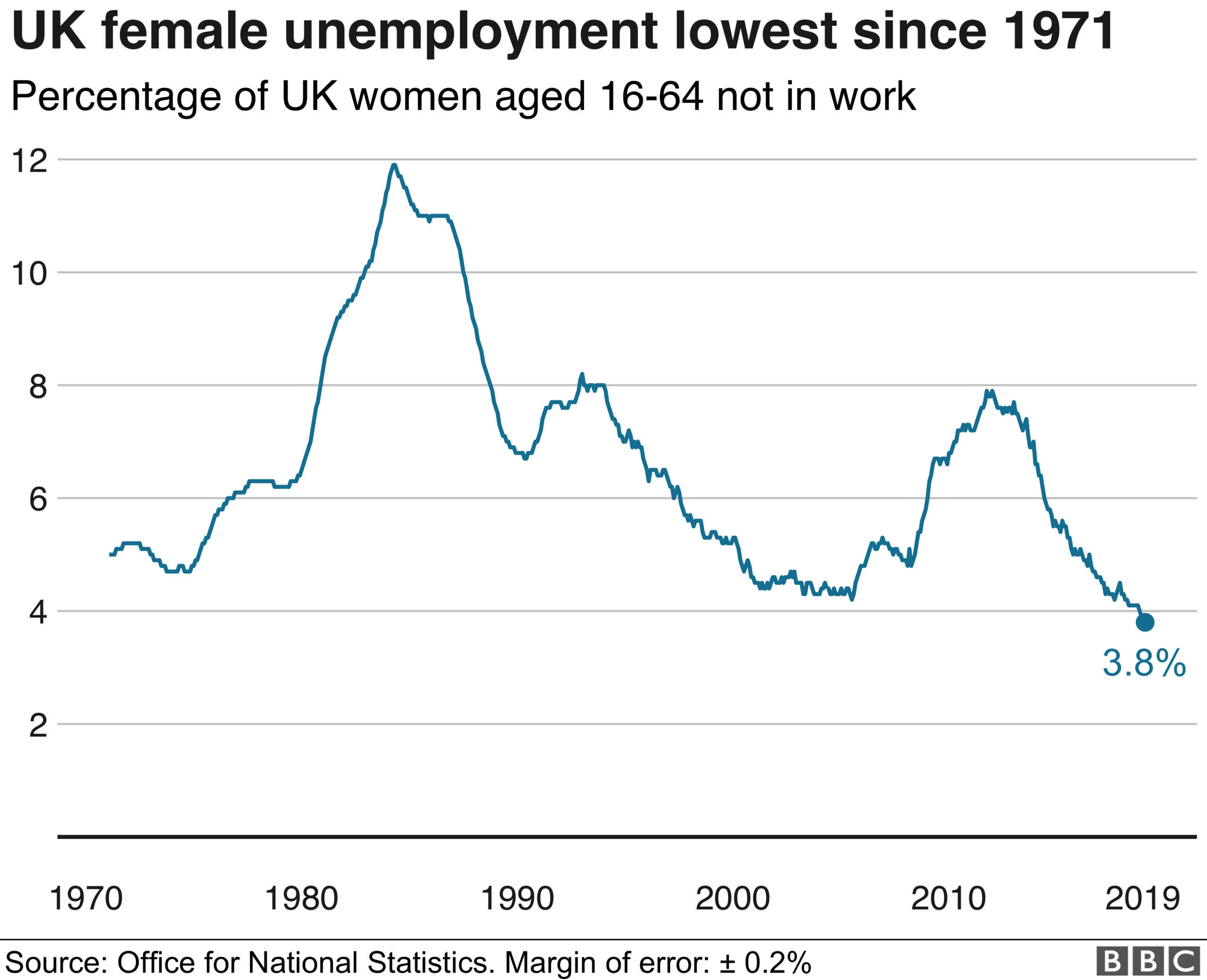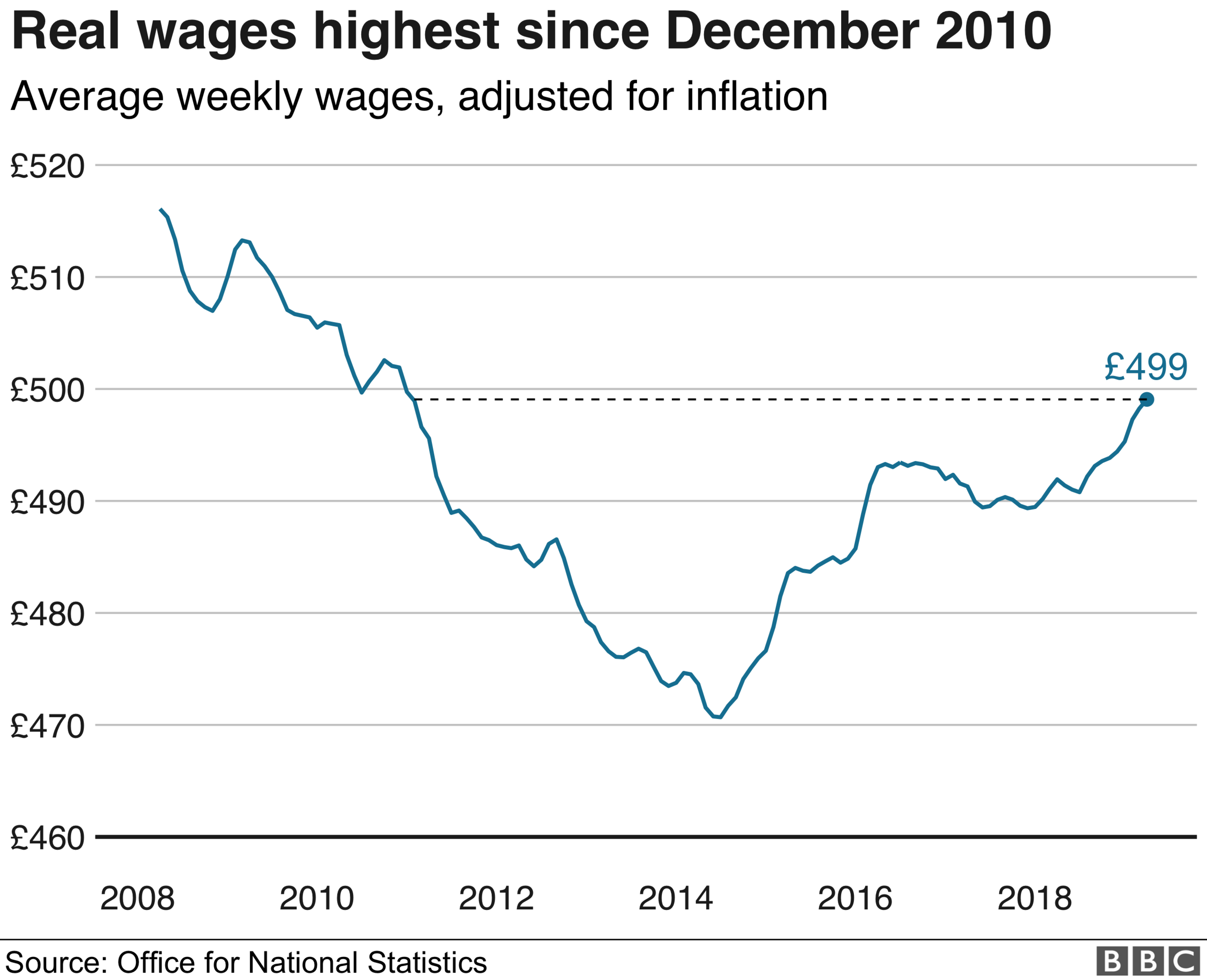Female unemployment rate lowest since 1971
- Published
- comments

Britain's female unemployment rate in the first three months of the year has fallen to 3.7%, the lowest since comparable records began in 1971.
The Office for National Statistics , externalincluded the figure in data showing the overall unemployment rate in the three-month period stood at 3.8%, the lowest rate since late 1974.
For men the rate was 3.9%, the lowest since mid 1975.
Excluding bonuses, average weekly earnings for employees rose by 3.3%.
What is happening to unemployment?
The ONS said that unemployment rates for both men and women have been falling since late 2013.
Ben Brettell, senior economist at Hargreaves Lansdown, said the unemployment figures were strong given the issues facing the economy.
"The UK labour market has been remarkably resilient in the face of Brexit-related uncertainty," he said.

For January to March 2019, the ONS said 1.3 million people were unemployed, 119,000 fewer than for a year earlier and 914,000 fewer than for five years earlier.
The overall unemployment rate of 3.8% in the first quarter was last matched in the three-month period from November 1974 to January 1975. It was last lower, at 3.7%, in October to December 1974.
What about women in the workplace?
Over the last five years the unemployment rate for men has fallen from 7% to 3.9% and for women has shown a smaller fall over this period - from 6.4% to 3.7%.
But this is the lowest level since 1971, when records began.
The ONS said the increase in the employment rate for women is due partly to changes to the state pension age for women, so fewer women are retiring between the ages of 60 and 65.

The ONS added that total hours worked by women had increased while for men had stayed stable. This is because falls in the employment rate for men have been roughly offset by population increases.
Andrew Wishart, UK economist at Capital Economics, said the increased participation rate of women was part of "a cultural change seen across developed economies".
It may also reflect higher wages attracting women and older workers into the workplace, he added.
What is happening to wages and jobs?
While average real wages - adjusted for inflation - were the highest since December 2010, the TUC said the rate of growth was slowing.
TUC General Secretary Frances O'Grady said: "Pay growth is stalling again. The last thing workers need is another hit in the pocket when real wages are still lower than a decade ago".
Employment Minister Alok Sharma said the rise in wages and booming higher-skilled employment meant prospects for families were improving.
"We now need to shift some of our focus to up-skilling people and supporting them into roles with real career progression to create a modern workforce fit for the challenges of the 21st Century," he said.


What does the fall in unemployment mean?

Not since Barry White's 'My first My last My everything' and 'Wombling Merry Christmas' were in the charts has the unemployment rate been lower (December 1974). And the rate of unemployment among women is now the lowest it's been since 1971 - try Janis Joplin's Mercedes Benz (Oh Lord).
In both of those years, the official policy goal was to obtain full employment.
And although inflation was higher in the 1970s, who wouldn't welcome the lowest unemployment since then?
Well, to be a party-pooper, it's not like most of those women are going to be able to afford a Merc themselves. Wages have risen by 3.3%, 1.5% above inflation.
But that's still only modest wage growth compared to the 1970s (when prices rose quickly, but wages mostly rose faster). We're not getting better off as fast as we did back then. And back then, productivity - the amount each worker could produce - was on the rise.
Now, according to the latest figures, it's dropped. Output per worker barely grew compared to a year before - up just 0.7%. That's not enough to fund the bigger pay rises. And at the same time, it's getting harder and harder to find the staff to meet orders.
You may be able to afford what you want, but you may have to wait a little longer.

What is happening to the mix of work?
Prof Geraint Johnes, at Lancaster University Management School, said the number of full-time employees fell in the quarter, which was offset by an increase in full-time self-employed workers and that the number of employees working part time also rose.
"Whether these shifts indicate a longer term increase in precarity will need to be monitored carefully over the coming months. The labour market seems now to be exhibiting signs of nervousness that, given present uncertainties, should not be surprising," Prof Johnes said.
Mr Wishart noted that employment only rose by 99,000 during the period, driven by self-employment, while full-time employment fell by 55,000.
"Despite the unemployment rate edging down to a fresh 45-year low, March's figures painted a picture of a softening labour market," Mr Wishart said.
- Published10 May 2019
